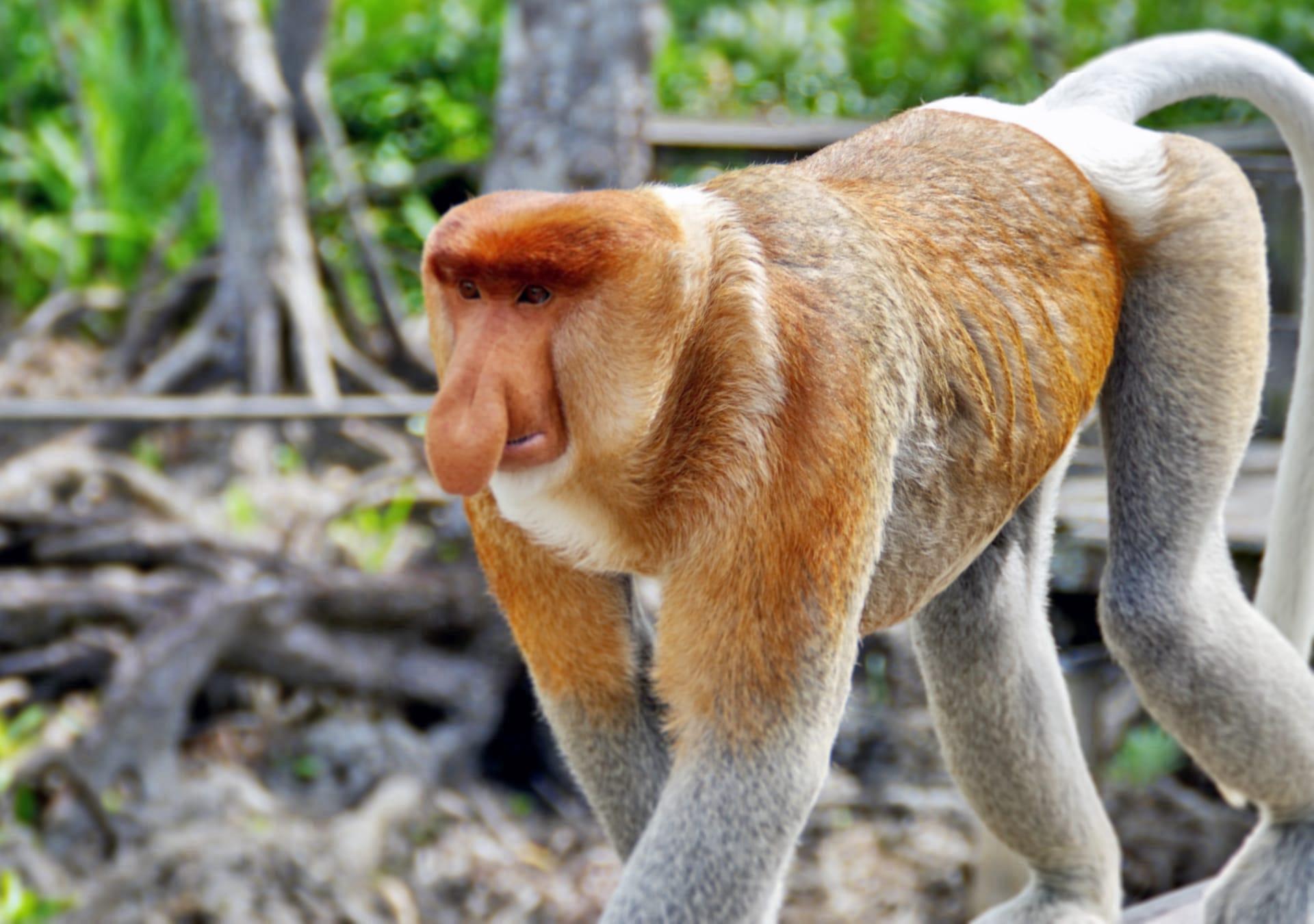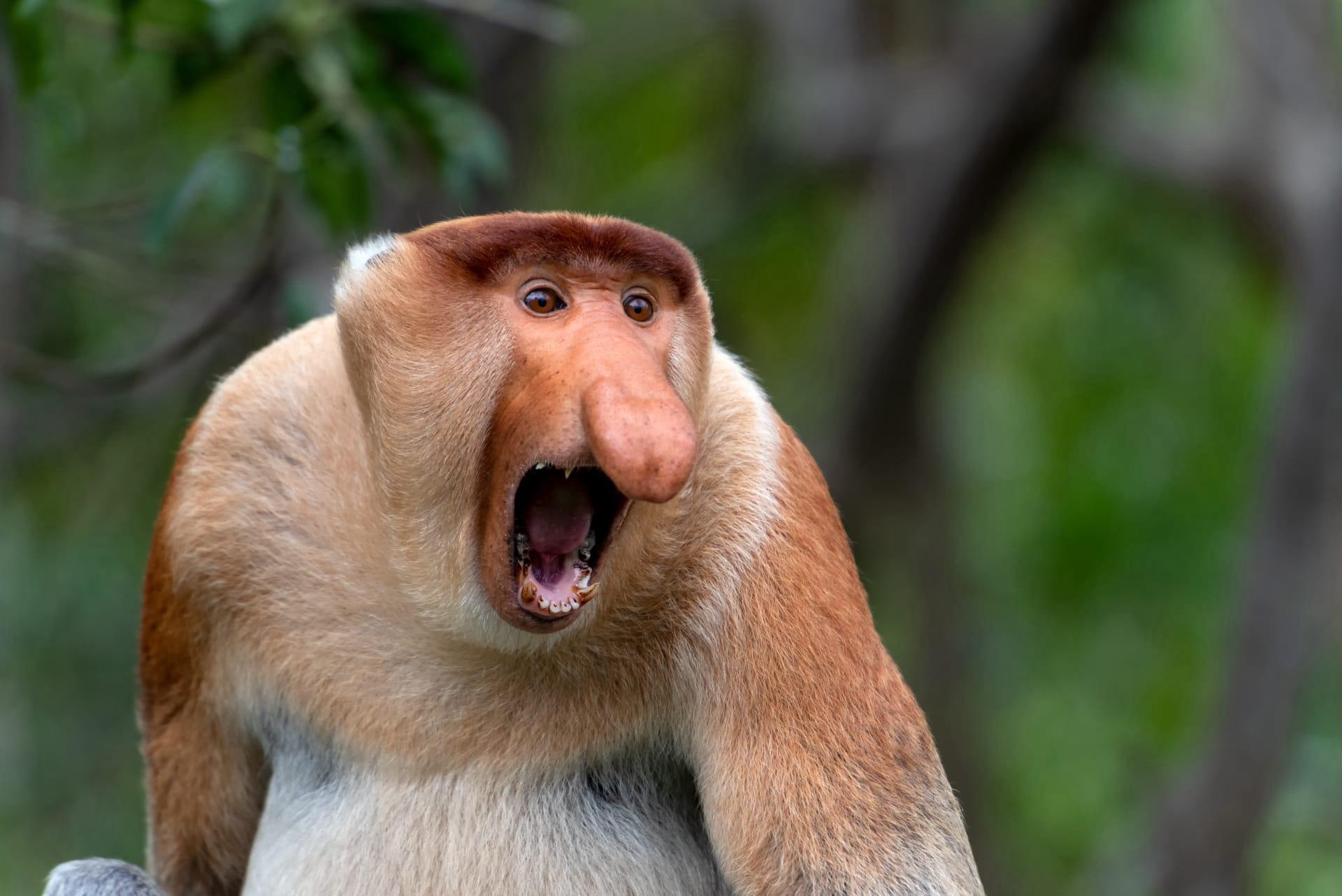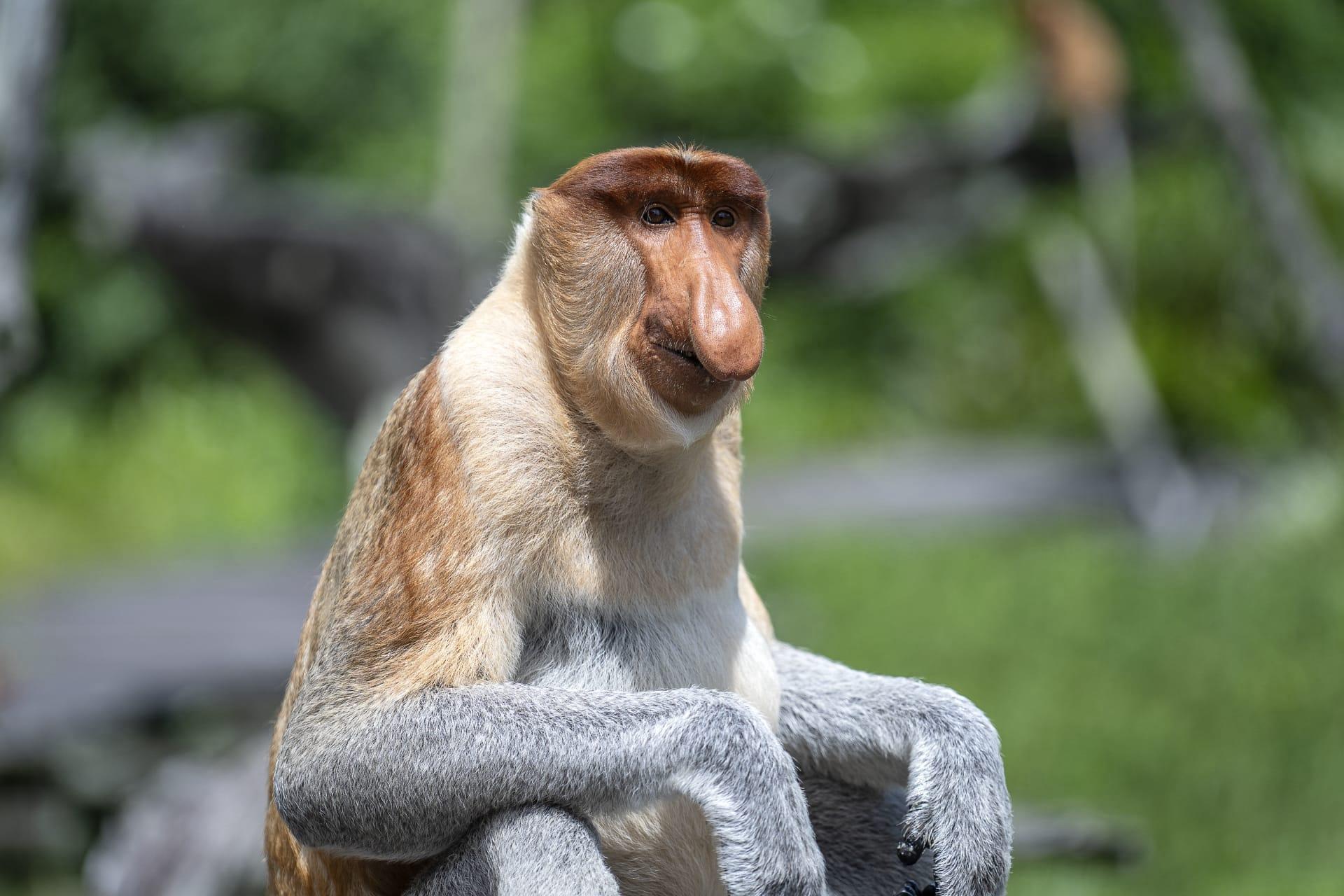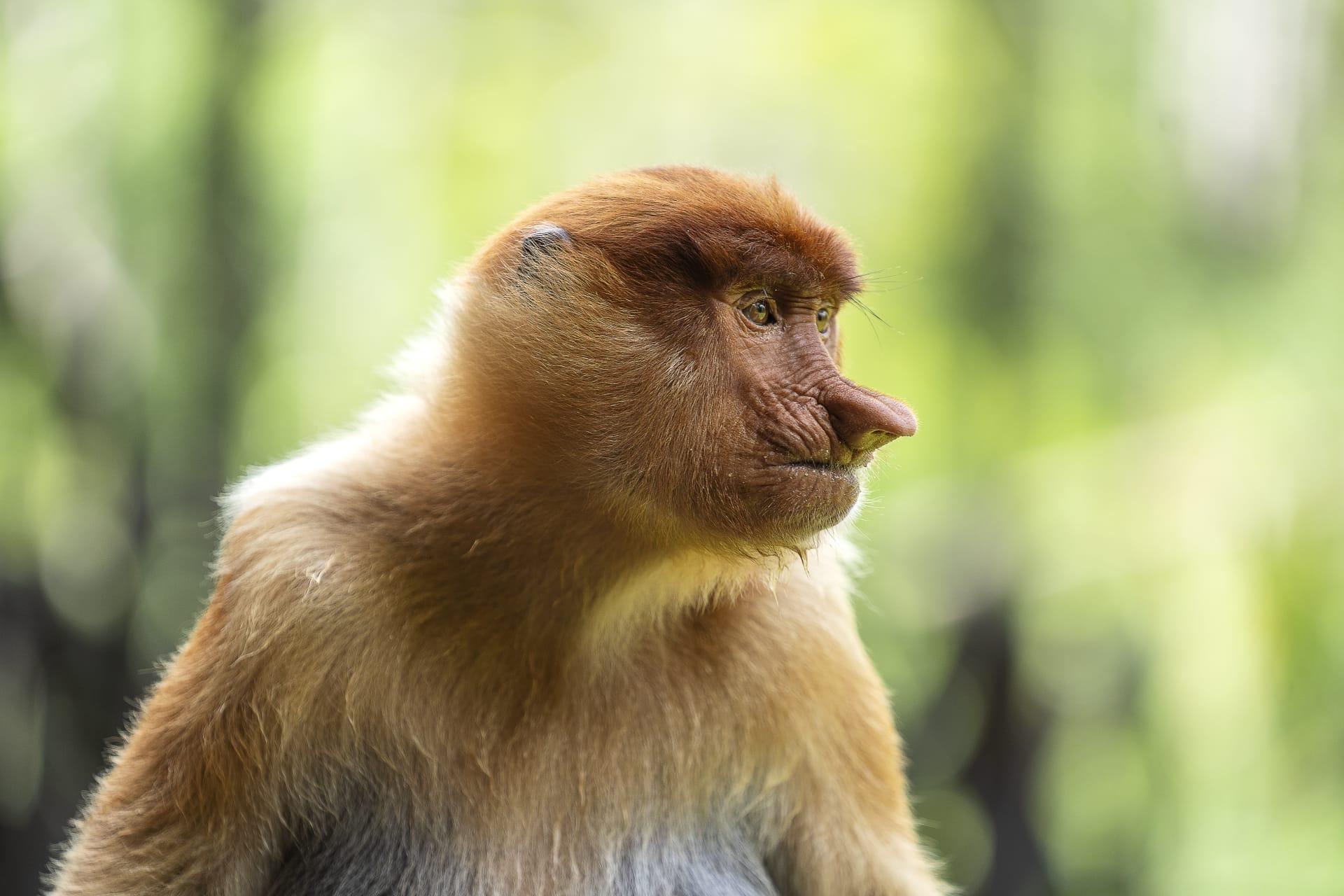Proboscis Monkey Trivia
- Home /
- Trivia Question /
- Animal /
- Proboscis Monkey Trivia
1
Question: What makes the nose of the Proboscis Monkey so unique among primates?
Answer: The Proboscis Monkey, known scientifically as Nasalis larvatus, is renowned for its distinctive large nose, especially in males. This nose can grow up to 7 inches (about 17.8 cm) long! It's not just for show; researchers believe the big nose amplifies the monkey's vocalizations, enhancing their mating calls and territorial signals. This oversized nose is a remarkable adaptation, setting the Proboscis Monkey apart from other primates.
Question: How do Proboscis Monkeys adapt to their aquatic habitats?
Answer: Proboscis Monkeys have developed unique adaptations for their life around water in the mangrove forests of Borneo. They are excellent swimmers, aided by their partially webbed feet which allow for more efficient movement in water. This adaptation is crucial for evading predators and accessing food across their riverine habitat. They can even swim up to 20 meters underwater, demonstrating a remarkable ability to adapt to their aquatic environment.

2
Question: Is it true that Proboscis Monkeys only eat bananas?
Answer: Contrary to popular belief, Proboscis Monkeys have a more varied diet than just bananas. They primarily eat leaves, seeds, and unripe fruits, which are abundant in their mangrove and riverine forest habitats. Their stomachs are uniquely adapted to digest this fibrous, vegetative diet, similar to how cows digest grass. They also consume occasional insects or small animals, but this is a minimal part of their diet.
Question: Do Proboscis Monkeys use their long noses to fight?
Answer: It's a common misconception that Proboscis Monkeys use their long noses for combat. In reality, their noses are not used as physical tools in fights. Instead, the size of a male's nose is more about social status and attracting mates. A larger nose is associated with dominance and is more appealing to female Proboscis Monkeys. Their actual physical disputes are more likely to involve vocalizations and body postures rather than nose-to-nose combat.

3
Question: How do Proboscis Monkeys communicate with each other?
Answer: Proboscis Monkeys use a fascinating mix of vocalizations, body language, and facial expressions to communicate. Their large noses enhance their vocal capabilities, allowing them to produce louder and more resonant calls. These calls are crucial for maintaining group cohesion, signaling danger, and during mating rituals. They also use a range of facial expressions and postures to convey messages within their social groups.
Question: What is the social structure of Proboscis Monkey groups?
Answer: The social structure of Proboscis Monkeys is quite complex and fascinating. They live in two types of groups: harems and bachelor groups. Harem groups consist of one dominant male and multiple females with their offspring, while bachelor groups are composed of non-breeding males. These groups can range in size, with harems typically having around 10-20 individuals. This social structure plays a crucial role in their mating system and overall survival.

4
Question: Are Proboscis Monkeys endangered, and what are the threats they face?
Answer: Unfortunately, Proboscis Monkeys are listed as endangered on the IUCN Red List. They face several threats, primarily habitat loss due to deforestation for palm oil plantations and human settlement. Additionally, their mangrove and freshwater swamp habitats are being degraded and fragmented. Conservation efforts are crucial to protect these unique primates and their habitats.
Question: How do young Proboscis Monkeys develop within their groups?
Answer: Young Proboscis Monkeys are nurtured and protected within their social groups, crucial for their survival and development. They are born with blue faces and a small nose, which gradually changes to the adult coloration and size as they mature. The young rely on their mothers for food and protection for the first few months. As they grow, they learn social and survival skills by interacting with other group members, essential for their integration into the troop.

5
Question: Can Proboscis Monkeys be found outside of Borneo?
Answer: Proboscis Monkeys are endemic to Borneo, meaning they are not naturally found in any other part of the world. Their entire existence is tied to the island's unique mangrove forests, swamps, and riverine environments. Any sightings outside Borneo are likely due to human intervention, such as in zoos or wildlife sanctuaries.
Question: What role do Proboscis Monkeys play in their ecosystem?
Answer: Proboscis Monkeys play a vital role in their ecosystem, particularly in seed dispersal. Their diet of fruits means they help in spreading the seeds of various plants throughout their habitat. This seed dispersal is crucial for the regeneration of forest areas, maintaining the ecological balance. Their presence also indicates a healthy, diverse ecosystem, as they require a rich habitat to thrive.